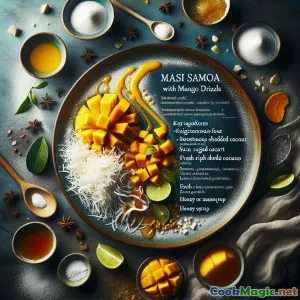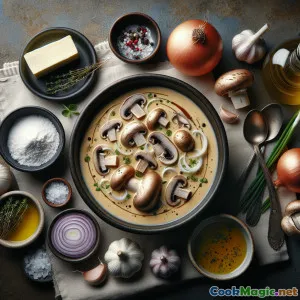Mastering Afghan Kebabs at Home
8 min read Discover the art of making authentic Afghan kebabs at home with tips on flavors, techniques, and cultural insights to elevate your grilling game. April 25, 2025 09:55
Mastering Afghan Kebabs at Home
Imagine the smoky aroma of seasoned meat sizzling over an open flame, the tantalizing sight of skewered morsels glowing with a golden hue, and the irresistible taste of spices that tell stories of centuries-old traditions. Afghan kebabs are not just a dish; they are a cultural experience, a symbol of hospitality, and a testament to the rich culinary history of Afghanistan.
Whether you're an aspiring home chef or a seasoned grill master, mastering Afghan kebabs offers a rewarding journey into a world of bold flavors, aromatic spices, and time-honored techniques. In this comprehensive guide, we'll explore the cultural significance of Afghan kebabs, delve into the authentic recipes, and share practical tips to recreate these delicious skewers in your own kitchen.
The Cultural and Historical Significance of Afghan Kebabs
Afghan cuisine is a mosaic of flavors, textures, and influences, shaped by its geographical crossroads and diverse peoples. Kebabs, in particular, hold a special place in Afghan social and culinary traditions. Historically, these skewers of marinated meat have been served during celebrations, communal gatherings, and daily meals, symbolizing hospitality and unity.
The origins of Afghan kebabs can be traced back centuries, influenced by Persian, Central Asian, and Middle Eastern culinary practices. Over time, local ingredients and spices have been incorporated, giving rise to unique regional styles like the Shashlik, Chapli Kebab, and Kofta Kebabs.
Afghan kebabs are often cooked over open flames or charcoal, imparting a distinct smoky flavor that elevates the dish. The communal act of grilling and sharing kebabs reinforces social bonds, making them more than just food—they are a cultural ritual.
The Key Elements of Authentic Afghan Kebabs
1. The Meat
Traditionally, Afghan kebabs use lamb, mutton, or chicken. The choice of meat significantly impacts flavor and texture. Lamb is favored for its richness and tenderness, while chicken offers a lighter alternative.
2. Marinades and Spices
The hallmark of Afghan kebabs is their flavorful marinade. Common ingredients include:
- Yogurt: Adds tenderness and a tangy flavor.
- Garlic and Onion: For depth and aroma.
- Cumin, Coriander, and Black Pepper: For warmth and earthiness.
- Sumac and Paprika: To enhance color and add a subtle tang.
- Vinegar or Lemon Juice: For acidity.
3. The Skewers
Traditionally, kebabs are threaded onto metalorwooden skewers. If using wooden skewers, soak them in water for at least 30 minutes to prevent burning.
4. The Cooking Method
Achieving authentic flavor involves cooking over hot charcoalorwood fires, which imparts a smoky aroma and charred exterior. Precise control of heat ensures the meat is cooked evenly, retaining juiciness.
Step-by-Step Guide to Making Afghan Kebabs at Home
Ingredients
- 500 grams lamb or chicken, cut into 1-inch cubes
- 1 cup plain yogurt
- 3 cloves garlic, minced
- 1 small onion, grated
- 1 teaspoon cumin
- 1 teaspoon coriander
- ½ teaspoon black pepper
- ½ teaspoon paprika
- 1 tablespoon vinegar or lemon juice
- Salt to taste
- Wooden or metal skewers
Preparation
1. Marinate the Meat
In a mixing bowl, combine yogurt, garlic, onion, cumin, coriander, black pepper, paprika, vinegar, and salt. Add the meat cubes and coat thoroughly.
Cover and refrigerate for at least 4 hours, preferably overnight. This allows the flavors to penetrate and tenderize the meat.
2. Prepare the Grill
Preheat your grill or barbecue to high heat. If using charcoal, wait until the coals are white-hot and covered with a light ash.
3. Skewer the Meat
Thread the marinated meat onto skewers, leaving a little space between pieces to ensure even cooking.
4. Grill the Kebabs
Place skewers on the grill. Cook for about 10-15 minutes, turning occasionally, until the exterior is charred and the inside is cooked through. Baste with a little oil or marinade during grilling for extra flavor.
5. Serve
Remove from the grill and let rest for a few minutes. Serve hot with traditional Afghan accompaniments like naan bread, fresh salad, and cilantro chutney.
Tips for Perfect Afghan Kebabs at Home
- Choose quality meat: Fresh, well-marbled meat makes a noticeable difference.
- Marinate longer: The longer the meat marinates, the more flavorful and tender it becomes.
- Control your heat: High heat is essential for a good char, but avoid burning the outside while the inside remains raw.
- Use a grill or broiler: If outdoor grilling isn't an option, a broiler can mimic the high heat environment.
- Experiment with spices: Feel free to add a dash of cinnamon or cardamom for a personal twist.
Personal Reflections and Cultural Tips
Cooking Afghan kebabs at home is more than a culinary exercise; it’s a way to connect with a vibrant culture. I recall the first time I prepared Afghan kebabs—standing by my grill, the air filled with the aroma of cumin and grilled meat, I was transported to the bustling bazaars of Kabul.
Sharing kebabs with friends and family transforms a simple meal into a communal celebration. The act of skewering meat, watching it turn golden over flames, and tasting the smoky, spiced bites fosters a deep appreciation for Afghan culinary artistry.
For those eager to delve deeper, consider exploring regional variations—perhaps adding a touch of saffron to your marinade or serving with traditional Afghan rice pilaf (pulao). Each tweak offers a new layer of authenticity and flavor.
Final Thoughts
Mastering Afghan kebabs at home is an enriching journey that combines history, culture, and culinary skill. With patience, quality ingredients, and a little practice, you can recreate the magic of Afghan street food or family gatherings right in your own backyard. These kebabs are more than just grilled meat—they are a celebration of Afghan hospitality and tradition.
So fire up your grill, marinate your meat, and embark on this flavorful adventure. Your taste buds—and your guests—will thank you.
Happy grilling!









